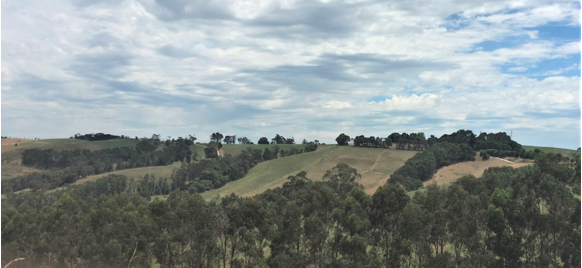Are trees on farms the future for the timber industry?

A multi-disciplinary research team is developing new models for growing trees on farms to help meet the needs of landholders, investors and the timber industry.
Project leader Rod Keenan said the need for wood is increasing to meet future timber demands of Australian housing.
“The increasing use of wood in construction for design and environmental benefits will increase this demand as will the substantial push for renewable and sustainable products to replace plastics,” Professor Keenan said.
“We are examining whether timber industry investment in trees on farms can provide their wood needs and also provide shade, shelter, carbon, water and biodiversity benefits."
A survey mailed to selected owners and managers of land in south-west Victoria and Gippsland asks about current agricultural activities, views on planting trees for harvest in the future and the importance of different factors when considering integrating trees with other land uses.
“We are working with industry, landholders and the finance community to develop innovative ways to provide benefits to farming and the environment, and meet demand for timber and wood products,” Professor Keenan said.
“As well as generating more benefits from farm trees for farmers and the environment, the project is driven by growing global and local demand for wood.
“Importantly, new investment in trees can also contribute additional income for landowners and support new or expanded regional industries.”
The study has found there is nearly a million hectares of suitable farmland in southern and eastern Victoria where timber trees could complement existing agricultural land uses.
“Planting 20 per cent of this area would help address our looming national wood shortage. Rural land prices are high, and it is generally not financially feasible, or socially acceptable, for the timber industry to buy whole properties for plantations,” Professor Keenan said.
To help develop new business models, the project team is keen to hear from land owners and managers about integrating trees on farms. Participation in the survey is voluntary and it should take about 15 minutes to complete.
Project researcher Nerida Anderson said completing the survey does not commit people to planting trees.
“The project team would just like to hear your views on integrating trees on farms,” Dr Anderson said.
“We encourage landholders who receive the survey to either complete it on-line or post the completed survey back in the replied paid envelope provided.”
For further information about the research contact Professor Rod Keenan, rkeenan@unimelb.edu.au | 03 9035 8227.
The project is funded by the Commonwealth Government’s Voluntary Matching Program, co-funded by HVP Plantations, Midway Ltd, Australian Paper, AKD Softwoods, and One Forty One Plantations Ltd with research conducted through the University of Melbourne. Forest and Wood Products Australia administer the project on behalf of the Department of Agriculture and Water.